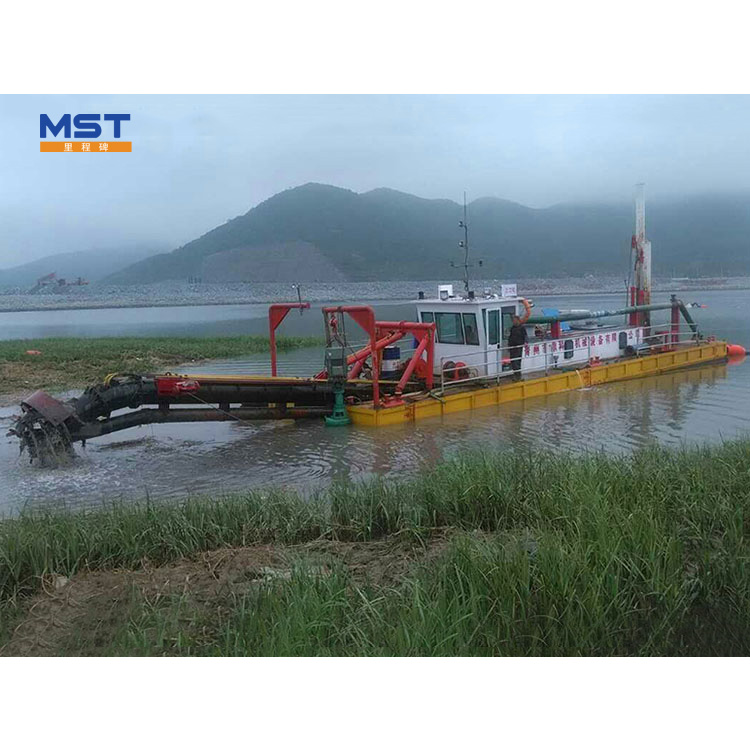What is the principle of cutter suction dredger?
2024-04-15
A cutter suction dredger (CSD) is a type of dredging vessel used to excavate and remove sediment, silt, sand, and other materials from the bottom of bodies of water, such as rivers, lakes, harbors, and coastal areas. The principle of operation of a cutter suction dredger involves several key components and processes:

1. Suction Pump: The heart of a cutter suction dredger is a powerful suction pump located on board the vessel. This pump creates a vacuum by sucking in water and sediment from the seabed through a suction pipe connected to a dredging arm or ladder.
2. Cutter Head: Attached to the end of the suction pipe is a rotating cutter head equipped with sharp blades or teeth. The cutter head rotates and cuts into the seabed, loosening and dislodging sediment, rocks, and other materials.
3. Slurry Formation: As the cutter head cuts into the seabed, the loosened sediment and water are mixed together to form a slurry. The suction pump draws this slurry into the dredger through the suction pipe.
4. Transportation: The slurry is transported through the suction pipe to the suction pump located on the dredger. From there, it is pumped through discharge pipes or hoses to a designated discharge area, such as a disposal site or reclamation area.
5. Dredging Process: The dredging process involves the continuous operation of the cutter suction dredger, moving slowly along the dredging area while cutting into the seabed and removing sediment. The dredger can be maneuvered and repositioned as needed to cover the entire dredging area efficiently.
6. Control and Monitoring: Cutter suction dredgers are equipped with control systems and monitoring equipment to ensure safe and efficient operation. Operators control the dredging process, monitor dredging parameters such as suction pressure and pump speed, and adjust the cutter head as needed to optimize performance.
7. Maintenance: Regular maintenance of the cutter suction dredger is essential to ensure smooth operation and prevent downtime. This includes routine inspections, lubrication of moving parts, replacement of worn components, and cleaning of the dredging equipment.
Overall, the principle of a cutter suction dredger involves the mechanical excavation of sediment using a rotating cutter head, suction of the loosened material into a slurry, and transportation of the slurry to a designated discharge area for disposal or reclamation. This process allows for the efficient removal of sediment and the maintenance of navigational channels, harbors, and waterways.


